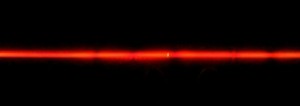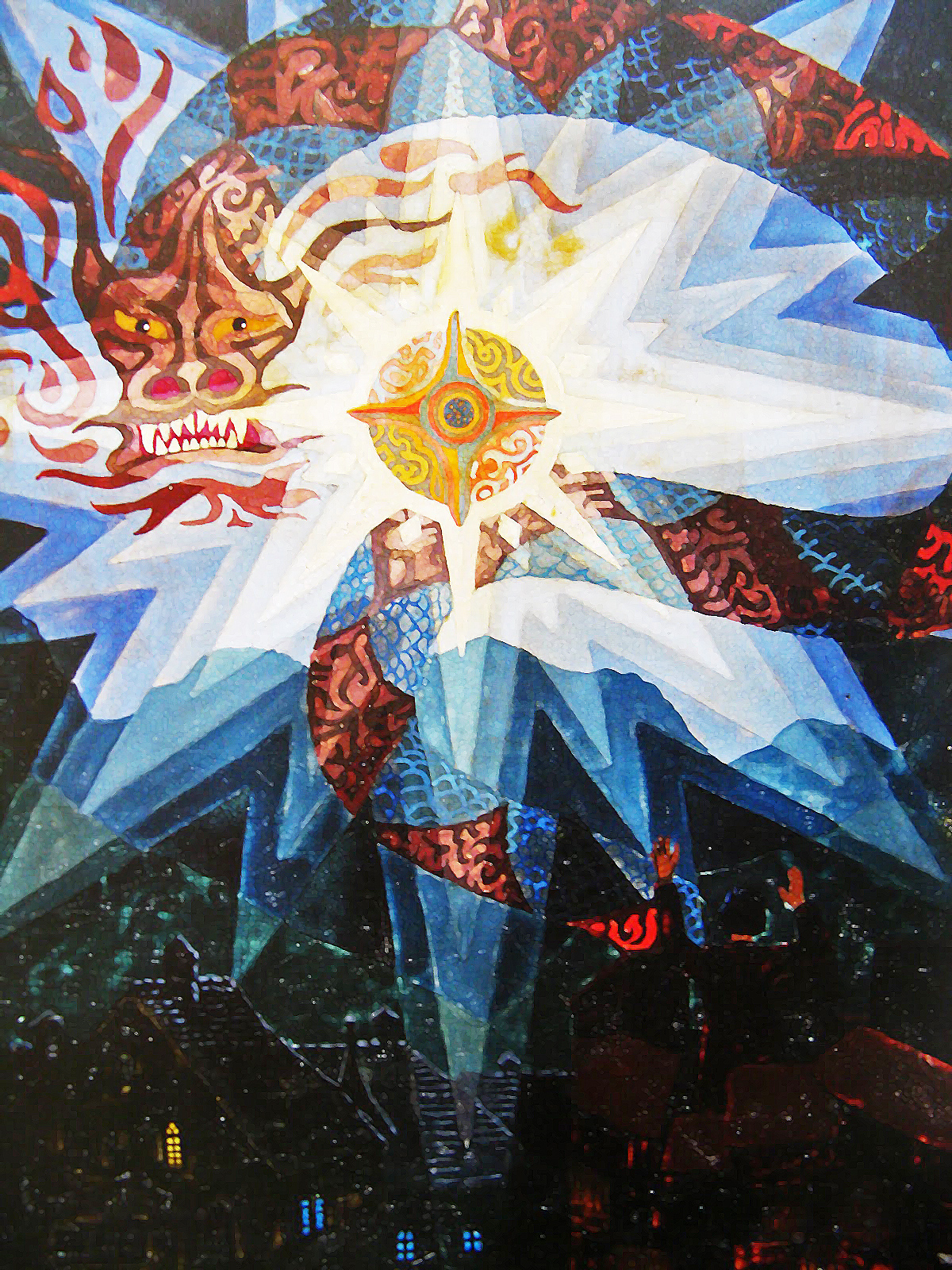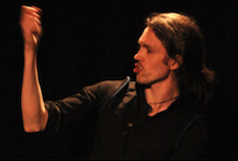[:no] There is a line. Between the known and the unknown. Between the comfortable and the uncomfortable. Between the expected and the unexpected. For some of us, that line closes us in. For some of us, that line is stretched too far away. The line has many names, it’s called taboo, illegal, danger, shame. Sometimes the line is a good thing, sometimes it’s the most terrible concept in the world. Where do you draw the line? And for what reason? According to Georges Bataille, in his book Eroticism: On Death and Sensuality, taboos are meant to be transcended, because the breaking of a taboo, the crossing of a line agreed upon by the community, will create such a stirring shock in the individual breaking the cultural taboo, that new insight and spiritual evolvement can occur. Experience is, after all, a far better teacher than fear and knee-jerk concepts of morality.
There is a line. Between the known and the unknown. Between the comfortable and the uncomfortable. Between the expected and the unexpected. For some of us, that line closes us in. For some of us, that line is stretched too far away. The line has many names, it’s called taboo, illegal, danger, shame. Sometimes the line is a good thing, sometimes it’s the most terrible concept in the world. Where do you draw the line? And for what reason? According to Georges Bataille, in his book Eroticism: On Death and Sensuality, taboos are meant to be transcended, because the breaking of a taboo, the crossing of a line agreed upon by the community, will create such a stirring shock in the individual breaking the cultural taboo, that new insight and spiritual evolvement can occur. Experience is, after all, a far better teacher than fear and knee-jerk concepts of morality.
Some lines are wholly based on human fears. The fear of actually doing wrong in a public place, breaking the established order of things, can in some ways trump the fear of death. The fear of actually doing what Thespius did back in the day, being the first person to go out of the chorus and become the first actor on stage, inviting others to follow. Becoming the protagonist. The actual fear of protagonism. Protagophobia?

In mythology, the dragon is said to be the guardian between the light and the dark, between what is known and what is not known, between the conscious and the unconscious realms. To cross the line, to find the treasures of the dark, the hero, the protagonist, must vanquish the dragon or die trying. It’s not an easy task, and highly dangerous, but perfectly possible. In the stories of old, the dragon also usually represents a ruling power, clinging onto the status quo, using the line as a way to reinforce his reign of terror on the local populace. And then, to quote Mariah Carey: «a hero comes along».
The dragon is both protector and oppressor, protecting the borders of reality, like Midgardsormen (Jormungard) in Norse mythology, encircling the world, keeping it stable against the abyss. But also enforcing terror and pain on the inhabitants of that reality, giving them the incentive to cross the line, kill the dragon and thereby enlarging and enriching the world.
When repressing someone, whether it is a social group, a culture, a profession or followers of a certain belief, a line is painted clear and red by the repressing powers. They represent the dragon in all its gory glory, the force that hinders human freedom and whose roaring fire makes people tremble in fear. Cross the line and get burned to ash and smoldering flesh! Yet this terror has also a positive side effect, because where there be dragons, heroes will grow from the mud. Through the presence of the dragon, men and women can come in touch with their highest potential. Because they must. Or be destroyed.
Yesterday, in Ramallah, Palestine, I was confronted with a line. A line both representing the border between an artwork and the spectator, the forbidden and the bidden and also that red line of dragon fire. This is what happened when I crossed it:
 [:en]
[:en] There is a line. Between the known and the unknown. Between the comfortable and the uncomfortable. Between the expected and the unexpected. For some of us, that line closes us in. For some of us, that line is stretched too far away. The line has many names, it’s called taboo, illegal, danger, shame. Sometimes the line is a good thing, sometimes it’s the most terrible concept in the world. Where do you draw the line? And for what reason? According to Georges Bataille, in his book Eroticism: On Death and Sensuality, taboos are meant to be transcended, because the breaking of a taboo, the crossing of a line agreed upon by the community, will create such a stirring shock in the individual breaking the cultural taboo, that new insight and spiritual evolvement can occur. Experience is, after all, a far better teacher than fear and knee-jerk concepts of morality.
There is a line. Between the known and the unknown. Between the comfortable and the uncomfortable. Between the expected and the unexpected. For some of us, that line closes us in. For some of us, that line is stretched too far away. The line has many names, it’s called taboo, illegal, danger, shame. Sometimes the line is a good thing, sometimes it’s the most terrible concept in the world. Where do you draw the line? And for what reason? According to Georges Bataille, in his book Eroticism: On Death and Sensuality, taboos are meant to be transcended, because the breaking of a taboo, the crossing of a line agreed upon by the community, will create such a stirring shock in the individual breaking the cultural taboo, that new insight and spiritual evolvement can occur. Experience is, after all, a far better teacher than fear and knee-jerk concepts of morality.
Some lines are wholly based on human fears. The fear of actually doing wrong in a public place, breaking the established order of things, can in some ways trump the fear of death. The fear of actually doing what Thespius did back in the day, being the first person to go out of the chorus and become the first actor on stage, inviting others to follow. Becoming the protagonist. The actual fear of protagonism. Protagophobia?

In mythology, the dragon is said to be the guardian between the light and the dark, between what is known and what is not known, between the conscious and the unconscious realms. To cross the line, to find the treasures of the dark, the hero, the protagonist, must vanquish the dragon or die trying. It’s not an easy task, and highly dangerous, but perfectly possible. In the stories of old, the dragon also usually represents a ruling power, clinging onto the status quo, using the line as a way to reinforce his reign of terror on the local populace. And then, to quote Mariah Carey: «a hero comes along».
The dragon is both protector and oppressor, protecting the borders of reality, like Midgardsormen (Jormungard) in Norse mythology, encircling the world, keeping it stable against the abyss. But also enforcing terror and pain on the inhabitants of that reality, giving them the incentive to cross the line, kill the dragon and thereby enlarging and enriching the world.
When repressing someone, whether it is a social group, a culture, a profession or followers of a certain belief, a line is painted clear and red by the repressing powers. They represent the dragon in all its gory glory, the force that hinders human freedom and whose roaring fire makes people tremble in fear. Cross the line and get burned to ash and smoldering flesh! Yet this terror has also a positive side effect, because where there be dragons, heroes will grow from the mud. Through the presence of the dragon, men and women can come in touch with their highest potential. Because they must. Or be destroyed.
Yesterday, in Ramallah, Palestine, I was confronted with a line. A line both representing the border between an artwork and the spectator, the forbidden and the bidden and also that red line of dragon fire. This is what happened when I crossed it:


Legg igjen en kommentar